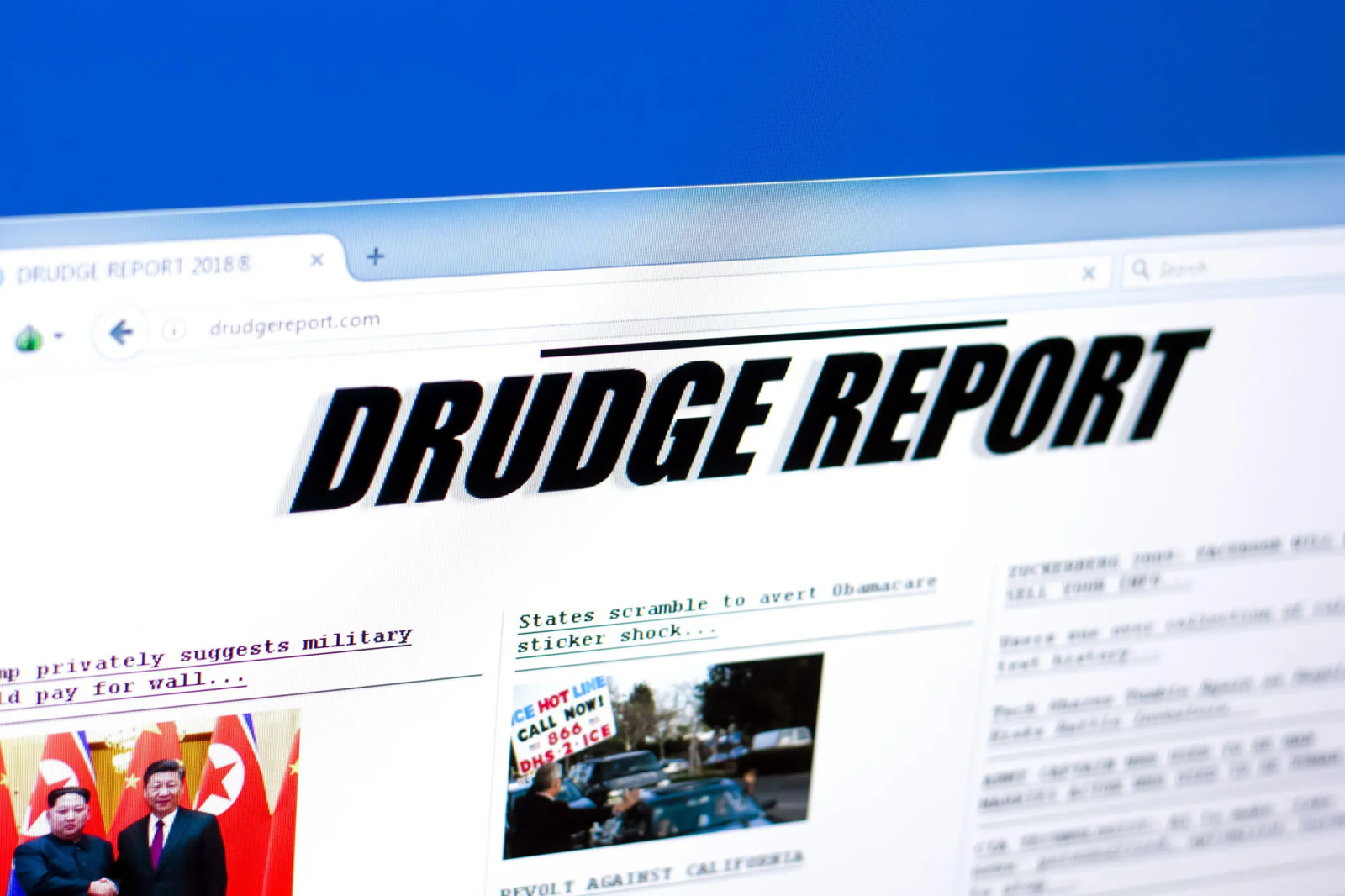The Drudge Report has long stood as a cornerstone in the digital media landscape, intriguing millions with its unique blend of news aggregation and conservative commentary. Founded in 1995 by Matt Drudge, it has played a pivotal role in shaping public opinion and influencing the news cycle. This article delves deep into the essence of the Drudge Report, exploring its origins, impact, and evolution over the years.
The Genesis and Evolution of the Drudge Report
The journey of the Drudge Report began in the mid-90s when the internet was still in its infancy. Matt Drudge, the creator, initially launched the platform as an email newsletter before transitioning it into a website. The site gained notoriety for its simple, almost rudimentary design, which has remained relatively unchanged over the decades. However, it’s not the website’s aesthetic that captured the audience’s attention but its content. The Drudge Report became famous for breaking significant stories ahead of mainstream media, including the Monica Lewinsky scandal in 1998, which propelled it into the national spotlight.
The Drudge Report’s format is straightforward yet effective. It aggregates news from various sources, placing a heavy emphasis on sensational political and entertainment stories. Over the years, the site has maintained its relevance by being at the forefront of breaking news, often leading with headlines hours, if not days, before traditional media outlets. Its role in the media ecosystem cannot be understated; it has been a critical driver of news cycles, influencing what topics become national conversations.
The Impact on Media and Politics
The influence of the Drudge Report extends beyond its ability to break news. It has significantly impacted the media industry and political landscape. One of its most notable contributions is how it has shaped the aggregation model in digital journalism. Many news sites and blogs have emulated the Drudge Report’s approach to news aggregation, recognizing its efficiency in capturing and retaining audience attention.
Politically, the Drudge Report has been a powerful force in conservative circles, often swaying public opinion and political discourse. Its selection of stories and headlines has reflected a conservative bias, making it a go-to source for conservative readers. This influence has been acknowledged by political figures, with some attributing their electoral successes to coverage on the Drudge Report. Its ability to set the agenda and frame political narratives has made it a significant player in American politics.
Controversies and Criticism
However, the Drudge Report’s journey has not been without its controversies. Critics argue that its editorial choices often blur the lines between news and sensationalism, contributing to the polarization of American politics. The site has been accused of promoting conspiracy theories and unverified reports, raising concerns about the reliability of the information it disseminates. These criticisms underscore the challenges of balancing editorial freedom with the responsibility of accurate reporting in the age of digital journalism.
Despite these criticisms, the Drudge Report’s steadfast audience attests to its continued relevance. The platform has adapted to the changing media landscape, leveraging social media and other digital channels to reach its audience. However, it faces increasing competition from a plethora of news aggregation sites and social media platforms that offer real-time news updates and diverse perspectives.
The Future of the Drudge Report
Looking forward, the Drudge Report stands at a crossroads. The digital media environment is rapidly evolving, with new technologies and platforms reshaping how news is consumed and distributed. The rise of algorithm-driven news feeds and personalized content poses a challenge to the traditional aggregation model. To remain relevant, the Drudge Report may need to innovate, finding new ways to engage its audience while staying true to its core ethos.
Additionally, the political landscape is changing. The polarization of media and politics necessitates a reevaluation of the role platforms like the Drudge Report play in shaping public discourse. As the line between news and opinion becomes increasingly blurred, the responsibility of media outlets to provide accurate, unbiased information is more critical than ever.
Conclusion
The Drudge Report has been a defining feature of the digital media landscape for over two decades. Its legacy is complex, marked by groundbreaking scoops, controversies, and a significant impact on media and politics. As we look to the future, the challenges faced by the Drudge Report reflect broader questions about the role of media in society. How news platforms adapt to the changing environment and address the issues of reliability and bias will shape not only their own futures but also the nature of public discourse. In an era of information overload, the need for trusted, efficient news aggregation is undeniable, making the evolution of platforms like the Drudge Report a subject of keen interest to observers of media and politics alike.
FAQs on the Drudge Report
How did the Drudge Report gain popularity?
The Drudge Report gained significant popularity in the late 1990s, especially after breaking the Monica Lewinsky scandal involving President Bill Clinton. Its ability to publish breaking news ahead of traditional media outlets contributed to its rise.
What type of content can be found on the Drudge Report?
The website aggregates a wide range of content, including political news, international events, entertainment stories, and odd news pieces. It is known for its catchy headlines and conservative tilt in story selection.
Has the design of the Drudge Report changed over time?
Despite minor changes and updates, the Drudge Report’s design has remained remarkably consistent since its inception. It is known for its simple, text-heavy layout that emphasizes functionality over aesthetics.















